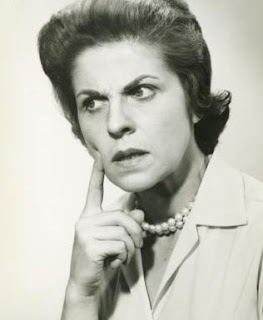
Hello Loyal Readers in blogland. We thought that in celebration of 2010 we would leave you with some interesting facts about New Years. Thanks to The Huffington Post.
• In medieval times, the beginning of the New Year was celebrated on March 25, the Feast of the Annunciation or Lady Day until Pope Gregory XIII introduced the Gregorian Calendar in 1582, a system used to this day which configured the 365 days of the year to accommodate a seven-day week. It wasn't until 1752, however, that England and America recognized this new system.
• The month of January gets its name from the Roman god "Janus,'' or "Januarus," a god said to have two heads and two sets of eyes, each facing the opposite direction., one looking back the other forward. From this, the New Year tradition of welcoming the future and saying goodbye to the past was conceived.
• The most popular song associated with New Year's Eve "Auld Lang Syne'' (which translates to "old long ago''), was originally an anonymous 15th century poem, when it first turned up in a book of Scottish poetry by George Bannatyne under the title "Auld Kyndness Forgot''. Another version was published in 1711, "Old Long Syne'' (believed to be Francis Sempill), and in 1724, Allan Ramsay turned it into a song, Auld Lang Syne'' in the "Tea Table Miscella''; before Scottish poet Robert Burns added two verses (3 and 4), which was then published 5 months after his death in 1796 in a collection entitled Scots Musical Museum.
• In 1837, Charles Dickens ruminating on the ringing in the New Year wrote in Sketches by Boz: "We measure man's life by years, and it is a solemn knell that warns us we have passed another of the landmarks which stand between us the grave. Disguise it as we may, the reflection will force itself on our minds, that when the next bell announces the arrival of a new year, we may be insensible alike of the timely warning we have so often neglected, and all the warm feelings that within us now.''
• Beginning in 1886, members of the Valley Hunt Club decorated their carriages with flowers while parading through the streets of Pasadena, Calif., in celebration of the ripe orange crop, which was then followed by a polo match, a tug of war, or greased pig-catching competition.
• In 1901, after the Tournament of Roses Association created the idea of having a college football game, Michigan and Stanford squared off on the campus of Throop Polytechnic Institute on January 1, 1902. The Wolverines crushed the Cardinals 49-0. It was such a lop-sided game that polo was once again brought back the following year; and from 1904 through 1914, Roman style chariot races were held.
College football returned to stay beginning in 1916.
• The New Year's Eve tradition of sipping champagne at the strike of midnight is thought to have originated with the French
• Another tradition holds that Wassail, a drink served on New Year's Eve and New Year's Day, comes from an old Gaelic word meaning "good health.'
• Christmas and New Year's eve prior to dawn of the 20th century were closely linked; so much so that in 19th century New York, legend has it that Santa Claus often arrived on New Year's Eve and would leave by wishing Happy New Year, not Merry Christmas, according to Stephen Nissenbaum, professor emeritus at the University of Massachusetts and author of the book, "The Battle for Christmas." "What's happened over the past 175 or so years is that alcoholic public revelry once associated with the entire season (including Christmas Eve and Day) has become isolated from the rest of the season and is now limited to New Year's Eve.'' Nissenbaum said.
• December 31, 1906 Adolph Ochs, publisher of the New York Times, dropped an illuminated globe from the top of his new building, Times Tower in Times Square on New Year's Eve. This public relations innovation marked the beginning of an annual ritual.
NOTE: The only time the ball didn't drop from Times Square on New Year's Eve (since 1907) were two years during World War II: 1942 and 1943 due to a wartime dim-out.
• December 31, 1929: Guy Lombardo, age 37, and his band, the Royal Canadians make their debut at the Roosevelt Hotel Grill in New York City, a two-tiered room with a second dance floor while reviving "Auld Lang Syne; and from that point on, it becomes America's signature song on New Year's Eve. The venue would become a mainstay until the Roosevelt closed in 1959; and Lombardo and the Royal Canadians moved to the Waldorf Astoria.
• December 31, 1948: CBS broadcast's the first televised presentation of a New Year's Eve celebration from Times Square.
• December 31, 1972: For the first time in television history, Guy Lombardo has competition on New Year's Eve, when NBC and Dick Clark, the worlds oldest teenager, debut with New Year's Rockin' Eve with guests the Three Dog Night, Blood Sweat and Tears, Billy Preston, Al Green, and Helen Reddy.
• December 31, 1976: Guy Lombardo and the Royal Canadians perform on New Year's eve for the final time; he died November 5, 1977 age 77 from kidney and heart failure.
• December 31, 1995: The New Year's Eve ball in Times Square for the first time goes high tech, when a laser lowers the ball, replacing the six man crew using a pulley.













